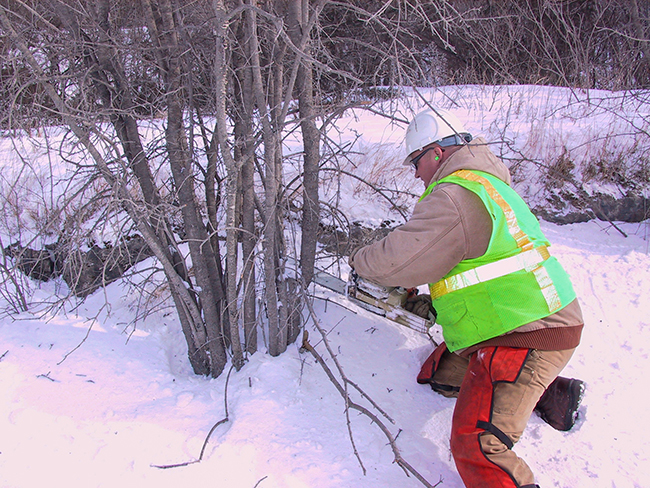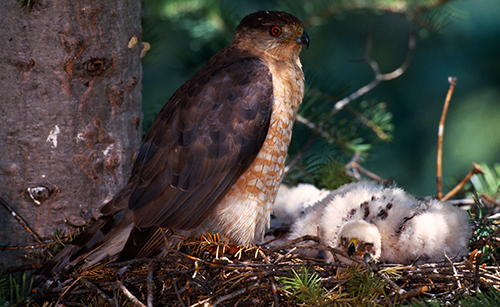Timing of Brush Control
Timing of Brush Control thompsbb
Most brush control occurs during winter, which is the most effective time to employ many of the chemical and mechanical brush control methods to kill woody vegetation. Roadside managers and their assistants also have more time to dedicate to brush control, unlike during the growing season, when they are busy managing herbaceous vegetation.
Some IRVM plans leave the timing of brush control open-ended. It may vary according to staff and resource availability or the danger and sight impairment posed by trees and shrubs in the right-of-way.
Protecting Endangered Bat Habitat
The Indiana bat (Myotis sodalis), the northern long-eared bat (Myotis septentrionalis), and the tricolored bat (Perimyotis subflavus) are listed as endangered under the federal Endangered Species Act. This designation provides protection for their habitat, which includes forested areas of large portions of Iowa during the growing season. As determined by the U.S. Fish and Wildlife Service, suitable habitat for these species includes forests containing live trees or snags equal to or greater than 5 inches in diameter at breast height (dbh) with cracks, crevices, or hollows. These trees can occur in linear settings such as fencerows and are considered suitable habitats if located within 1,000 feet of other forested or wooded habitats. Trees in highly developed urban areas are not deemed to be suitable habitats.
To avoid impacting these bats, counties could adopt a policy requiring the removal of trees at least 5 inches dbh between October 1 and March 31, when the bats are hibernating in caves and abandoned mines. According to the U.S. Fish and Wildlife Service, if trees must be removed outside of this time frame, the months of April, August, and September are preferred in order to avoid the times when bat colonies are most dense and young bats cannot fly.
Migratory Bird Treaty Act Compliance

The Migratory Bird Treaty Act prohibits the killing of protected migratory birds without prior authorization by the U.S. Fish and Wildlife Service. The act protects all native North American birds and their nests, which includes over 1,000 species. Before roadside vegetation management is implemented, precautions should be taken to prevent the disturbance of active nests (those with eggs). Active nests will most likely be present from April 1 to July 15.